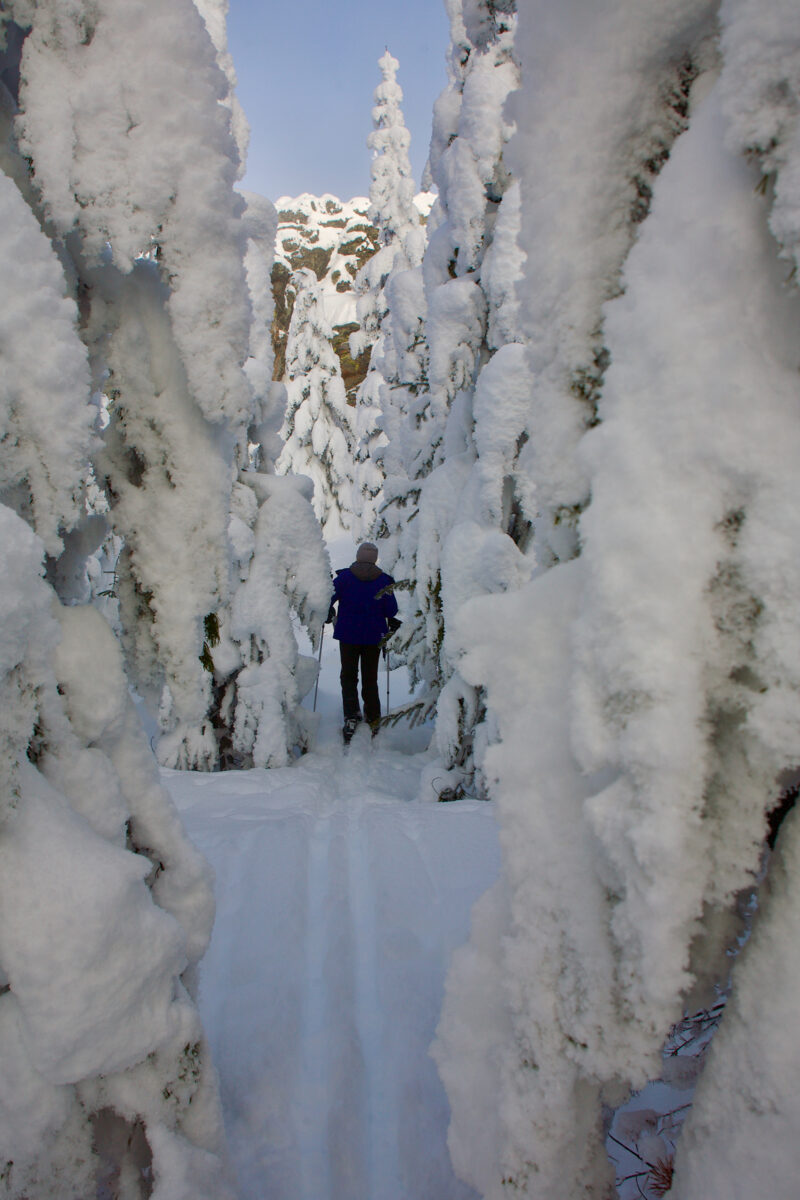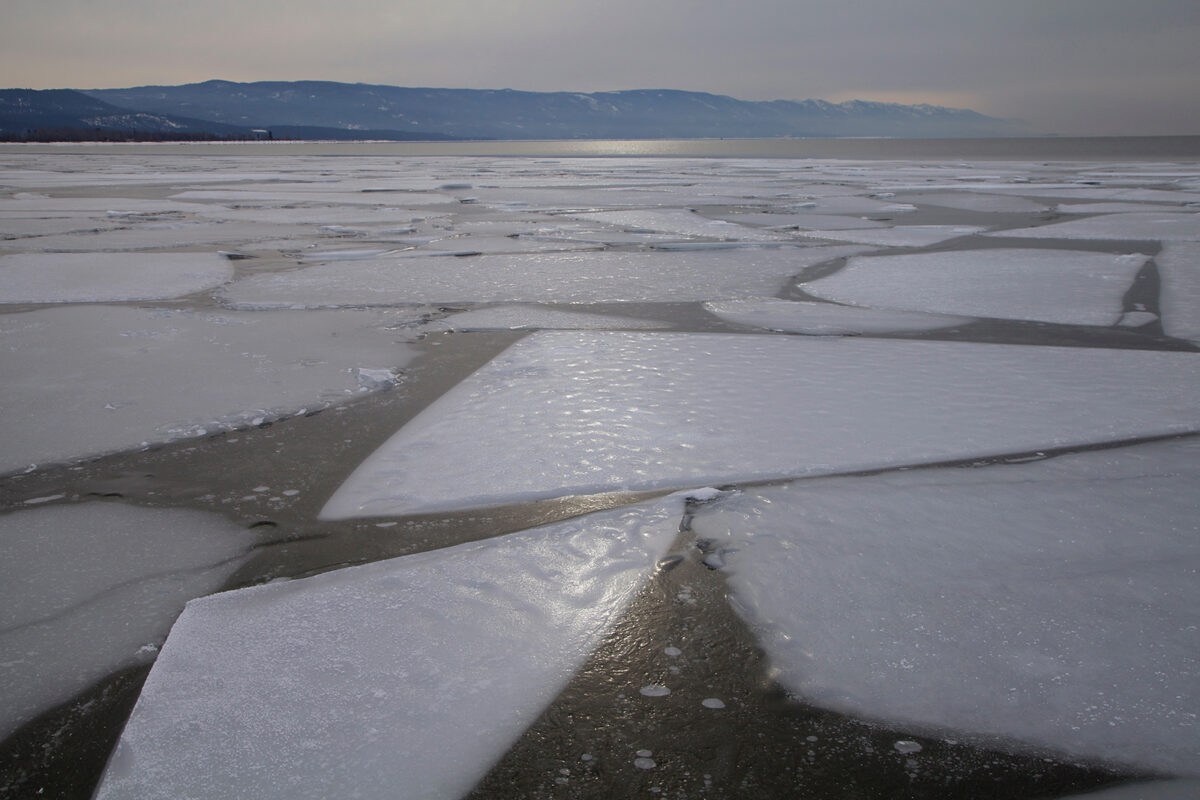The first snowstorm rolled in before Halloween this year before some areas had even seen a killing frost. Some might say it was delightful and others considered it frightful. Downtown Kalispell saw a couple of inches of snow while areas near Somers were blanketed with nearly 8 inches during the first winter event, followed by unseasonably cold temperatures that dropped into the single digits on Oct. 28. It was still 53 days from the official day of winter. The snow didn’t last for long in the valleys and fall-like weather returned. Winter in northwest Montana is notoriously unpredictable. But there are always predictions.
The National Oceanic and Atmospheric Administration (NOAA) released its U.S. Winter Outlook in October announcing that El Nino is in place for the first time in four years. Based on observations of above-average temperatures across the Pacific Ocean, the northern Rockies is forecast to have higher than normal temperatures and lower than normal precipitation.
But let’s remember that last winter showed signs of La Niña with lower temperatures and higher precipitation than normal, which proved the opposite in northwest Montana. By mid-March Kalispell had only picked up 45.3 inches of snow, which was 3 inches below average for that time of the year. That said, it still turned out to be one of the longest winters on record in terms of snow on the ground. Starting on Nov. 20, 2022 through mid-March there were 109 consecutive days of snow on the ground at Glacier Park International Airport in Kalispell and there was snow in the air through April 21. The all-time record was set during the winter of 1955-56 with 141 days of snow on the ground. The overall snowiest winter on record in Kalispell was in 1996 with a total of 143.8 inches of snowfall.
When it comes to the weather, one thing probably hasn’t changed much with the passage of time — people love to talk about it. And Montana’s extreme weather lends itself to great storytelling. Some winters have proved to be particularly memorable.
An iconic C.M. Russell watercolor titled, “Waiting for a Chinook” depicts a wintry landscape with an emaciated cow being stalked by wolves, capturing the direness of the severe winter of 1886-87, which was said to have killed 50% to 95% of cattle herds and contributed to the end of open-range cattle ranching. Snow stayed on the open range and crusted over in places where wind usually left the ground bare, making it difficult for animals to find food. It also proved catastrophic to elk. According to a National Park Service report, 60% of the 25,000-elk herd in northern Yellowstone succumbed to hunting and starvation that winter.

More than 100 years ago on March 17, 1917, a few column inches of “The Columbian” newspaper was dedicated to the author’s rambling prose about a relentless winter in Essex, which lies at an elevation of nearly 4000 feet and is known for its extensive snowpack in the winter. “Snow, snow, snow! Up to your waistline wherever you go, and the wind doth blow, and piles up snow, and I don’t know where I’ll go when the wind don’t blow and the snow don’t snow, but we’ll let’er go any way and say ‘We like??’”
The winter of 1936 was considered one of the coldest and also longest across the U.S., including in Montana. The average February temperature in Montana was 22 degrees below normal (of that time) and precipitation was above average. Winter still had its grip at the beginning of April with 8 degrees below zero Fahrenheit on April 1 followed by 5 below zero on April 2 in Kalispell, setting records as the latest 0 degree or lower temperatures for those dates, according to extremeweather.com. The brutal winter of 1935-1936 was followed by a one of the hottest summers in history.
Old newspaper excerpts captured some of the day-to-day events caused by the severe weather during this epic winter. A news item from the “Kalispell Bee” on Feb. 8, 1936, shows how the extreme weather caused a “curses, foiled again” moment for a suspected murderer. Its headline read, “Suspected Slayer Taken at Bozeman Hospital.” The story continued: “Unable to withstand 35 below any longer, Rudloph Holley, 25, suspected slayer and kidnapper of two in his flight from the law was apprehended here this morning when he applied for treatment of his frozen feet and hands at the Bozeman Deaconess hospital.”
An Essex headline told of a similarly frigid fate: “Man Found Badly Frozen Near Essex — Man found badly frozen along the Great Northern found by railroad section crew lying along the railroad tracks with hands, feet and ears frozen. Reported in bad condition but conscious. Taken to the county hospital for treatment.”
And in Helena, a headline story on Feb. 8, 1936, read: “Cold Continues Its Hold Upon Treasure State — Montana’s fiercest cold wave in many winters entered its seventh day and drove temperatures to new low records. Glasgow minus 49, coldest since 1916.”
The 1955-56 winter garnered the record for the most consecutive days of measurable snow on the ground in Kalispell with a total of 141 days. The snow finally melted on March 30 that year.
In 1989, a week-long warm spell tricked vegetation to come out of dormancy, which proved disastrous to the Flathead Lake cherry trees when temperatures plummeted and below-zero wind chills converged on the orchards. Many of the cherry trees were killed by this dramatic weather event.
According to NOAA records, 1996-97 was the snowiest in Kalispell, with over 143 inches that winter. On the other side of the spectrum was a surprising warm spell in 2019. Subtropical air moved into northwest Montana and temperatures rose to record highs. On Dec. 20, a high of 51 degrees Fahrenheit broke a record of 50 set in 1900. Two more days of warm weather reached 54 degrees on Dec. 21 and 55 on Dec. 22. Both these days broke previous records set in 1933. On Christmas day, Kalispell topped off the warm spell at 62 degrees, breaking the old record of 54 degrees set in 1924. This was the warmest day in December on record as well as for the meteorological winter between December and February. The heat wave might have been a nice break from winter, but it proved disappointing to those dreaming of a white Christmas.
Winter’s cold, ice and snow can be challenging, but also transforms our landscape into something magical and beautiful – from the delicate dance of snowflakes in the air, to marshmallow snowbanks along a creek, to the mirror-like sheen of a frozen lake, to snowy fields sparkling in the sunlight.
It’s no wonder that winter weather gives us so much to talk about.
Lakes – Reflections of Winter
Area lakes often literally mirror a cold snap as they are beat into submission by frigid temperatures and covered by a sheet of ice that can grow to a foot deep during a cold winter. Lakes most often freeze during a cold snap, depending on other existing elements such as wind. Wind will cool the water, but also can prevent it from freezing.
Flathead Lake covers 100 square miles and is up to 400 feet deep and most winters it does not freeze completely over because of its sheer size, depth and the presence of strong currents. Flathead Lake was completely covered by ice for 51 consecutive days during the winter of 1989-90. The last time it froze completely over was in 2019 along with Lake McDonald, the largest lake in Glacier National Park.
Swan Lake and Whitefish Lake freeze over more frequently as do many of the smaller lakes in the area, although portions with springs, upwellings, or thinner ice can open up with changing weather patterns.

Wacky Winter Weather
The following data compiled from archived sources reveals the wildly varying winter conditions found across Montana.
Coldest temperature recorded in the Lower 48
Minus 70 degrees Fahrenheit
Recorded on Jan. 20, 1974, at Rogers Pass on the Continental Divide near Helena.
Biggest temperature spike in a 24-hour period in the U.S.
103 degrees
Caused by a downslope Chinook wind event that caused a temperature of minus 54 degrees Fahrenheit to soar to 49 degrees Fahrenheit in Loma on Jan. 15, 1972.
Biggest temperature drop in a 24-hour period in the U.S.
100 degrees
44 degrees Fahrenheit to minus 56 degrees Fahrenheit in Browning on Jan. 23-24, 1916 (it might be a world record).
Snowiest town in Montana
Cooke City, where the annual snowfall is 195-200 inches. It should be noted that Cooke City also boasts the highest elevation of a Montana city at 7,708 feet above sea level.
Greatest single-year snowfall in Kalispell
1996, when 143.8 inches of snow between Jan. 1 and Dec. 31 (includes snowfall totals from two winters).
Coldest town in Montana
West Yellowstone
Temperatures range from zero to 20 degrees Fahrenheit throughout the day. Sub-zero temperatures are common, especially at night and at higher elevations. The record-low temperature is minus 66 degrees Fahrenheit.
Coldest Winter
1936
In February, the average temperature was 22 degrees below normal throughout the state.
It was also one of the longest winters on record.
